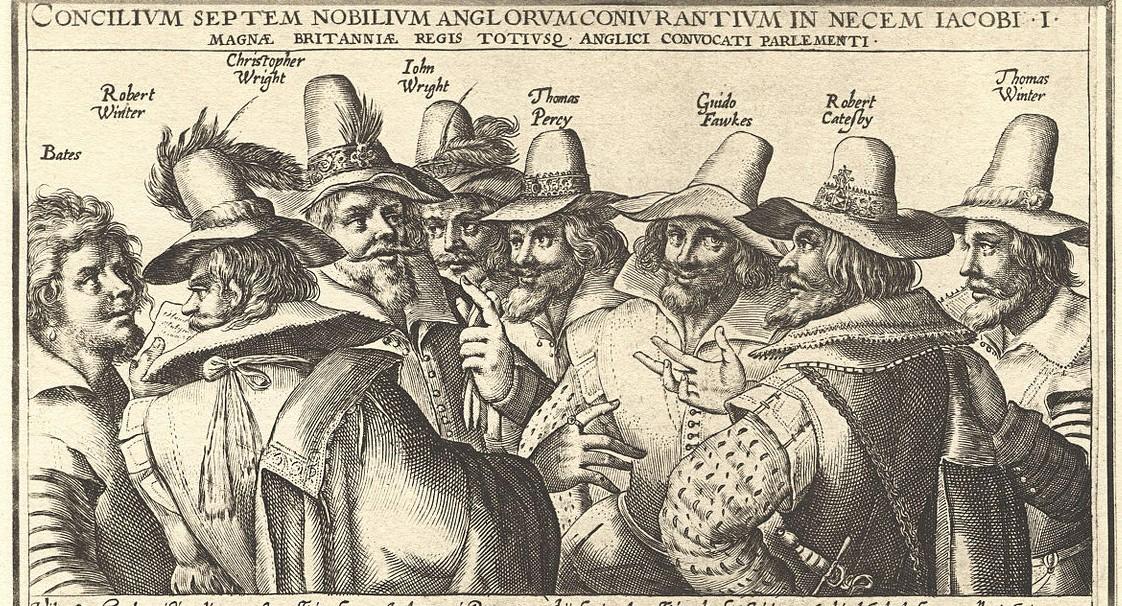
Gunpowder, treason & plot
Remember, remember the fifth of November, gunpowder treason and plot!
For 400 years, bonfires have burned on November 5th to mark the failed Gunpowder Plot. Guy Fawkes and twelve other men conspired to blow up the Houses of Parliament on November 5th, 1605.
The tradition of Guy Fawkes or Bonfire Night began the very same year as the failed coup. The plot was foiled in the night between the 4th and 5th of November 1605. Already on the 5th, agitated Londoners who knew little more than that their King had been saved, joyfully lit bonfires in thanksgiving.
Soon, people began placing effigies of Guy Fawkes, and sometimes the Pope or others, onto bonfires. The tradition grew and fireworks displays soon filled the skies.
But who were the core conspirators and where can you visit their old haunts?
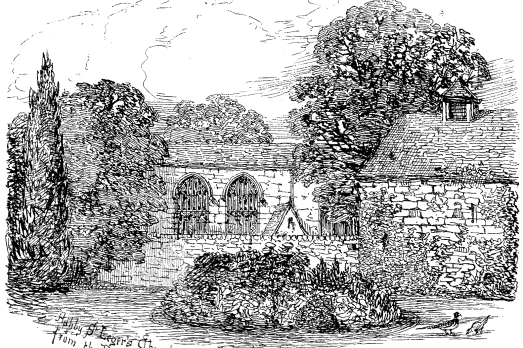
Robert Catesby
Robert Catesby was the charismatic leader of the group. He had a way with people, and convinced a number of his impressionable friends to go along with the murderous plan. Even as problems arose and some members expressed doubt, Catesby remained convinced that violent action was the only way forward. Catesby first recruited his close friends and relatives: Thomas Wintour, Jack Wright and Thomas Percy.
The family held the manor at Ashby St Ledgers since medieval times and is famous for the Gunpowder Plot Room above the Gatehouse where the conspirators formulated their plan to blow up Parliament.
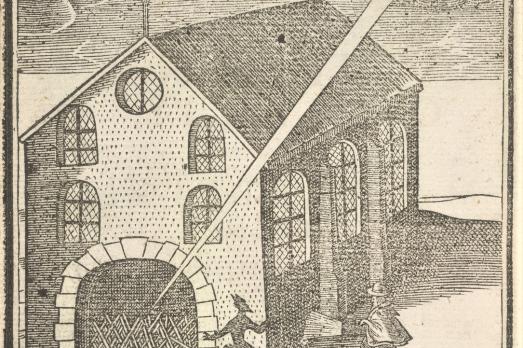
Guy Fawkes
Guy Fawkes is the name we most associate with the plot.
Catesby first recruited his close friends and relatives: Thomas Wintour, Jack Wright and Thomas Percy, but the group quickly grew to include Guy Fawkes. Guy was not part Catesby’s close knit circle, but he had fought in the Netherlands and Spain as a mercenary, where he earned the nickname Guido. He was passionate about the plight of the Catholics in England and was soon charged with the dangerous task of acquiring 36 barrels of gunpowder and storing them in a rented space beneath the House of Lords. At about midnight on 4th November the authorities made a search of the House of Lords and in the chamber's undercroft they discovered and arrested Fawkes.
Guy's father, Edward, worked for the Church of England. He was baptised in St Mary le Belfrey on 16 April 1570. The church is a special gem, right in the shadow of York Minster and close to where Constantine was declared Roman Emperor.
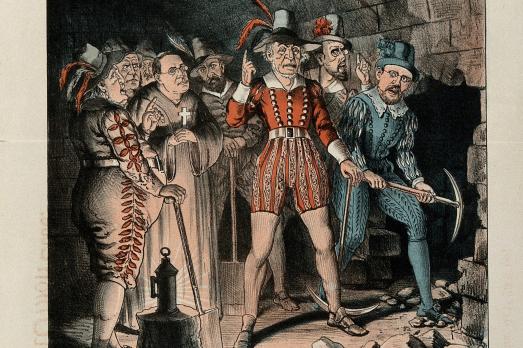
Robert & Thomas Wintour
Robert and Thomas Wintour were related to other conspirators.
Thomas was an intelligent and educated man, fluent in several languages and trained as a lawyer. By 1600 he had become a fervent Catholic and entreated Spain on behalf of England's oppressed Catholics. His pleas fell on deaf ears and in 1604 he decided to join with Catesby.
The plot began to unravel following an anonymous letter to Baron Monteagle, warning him to stay away from Parliament. Thomas reportedly asked Catesby to abandon the scheme, to no avail. When Fawkes was captured Thomas fled and met the other conspirators. He was shot in the firefight and arrested. Robert, who had left before the battle, evaded capture until January 1606.
Much of what is written about the plot is based on Thomas's confessions, given in the Tower of London in November 1605. The brothers were tried on 27 January 1606, and hanged, drawn and quartered several days later in London.
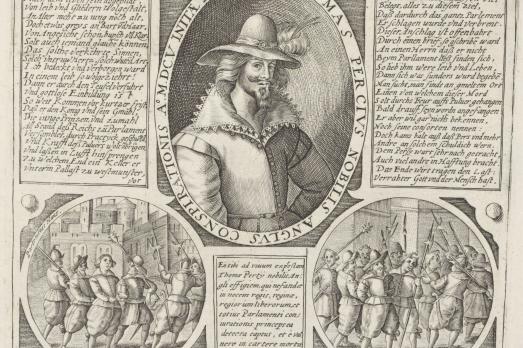
Thomas Percy
Thomas Percy was constable of Alnwick Castle and responsible for the Percy family's northern estates. He believed the new King James had reneged on his promises of toleration for English Catholics. Thomas met Robert Catesby in June and joined the conspiracy the year after.
When the plot was exposed Percy fled to the Midlands, catching up with some of the other conspirators. They were pursued by the Sheriff of Worcester and Percy was reportedly killed by the same musketball as Catesby. His body was later exhumed, and his head exhibited outside Parliament.
In part of a document of 1597, Henry Percy, Earl of Northumberland writes to his cousin:
'The very true and undoubted patrone of the parishe and church of Alnehame sending greetings in the Lord God Everlasting, grantes by his writing to my beloved Cosyn Thomas Percy, his executors, and assignees, the first and next advowsone, donation, nomination, presentation and free disposition of the Rectory and Parsonage of the Parish Church of Alneham'.
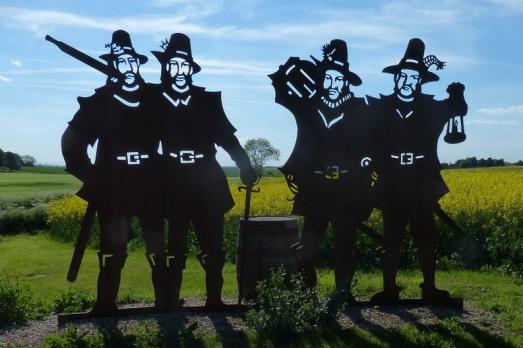
John & Christopher Wright
John and Christopher were baptised at Welwick in Yorkshire, on 16 January 1568. They were pupils at St Peter's School in York, along with Guy Fawkes.
Both were arrested in 1596 during Queen Elizabeth I's illness. They were also incarcerated at the White Lyon prison in 1601 for their involvement in the Earl of Essex's rebellion. Both were skilled swordsmen, and John was renowned for his courage.
Early in 1604 Robert Catesby invited his cousin Thomas Wintour to a meeting at the Duck & Drake Inn, in the Strand area of London. John was also present. After the meeting they swore an oath of secrecy on a prayer book. John exhibited little sign of doubt or scruple and remained close to the heart of the conspiracy. After the failure of the plot the Wright brothers were shot along with Catesby and Percy.
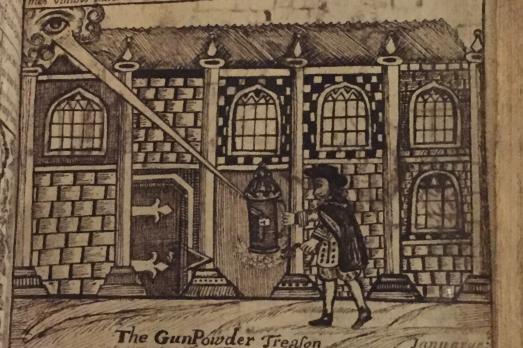
Remember, remember
To carry out their plan, the conspirators got hold of 36 barrels of gunpowder and stored them in a cellar, just under the House of Lords. The cellar was destroyed in the fire of 1834 that devastated the medieval Houses of Parliament but the lantern Guy Fawkes carried in 1605 is in the Ashmolean Museum, Oxford.
The Chapel of St Mary Undercroft was completed by King Edward I in 1297, further developed under Edward II, and finally completed by Edward III in around 1365. Because of its underground location, the crypt chapel was one of the few structures in the Palace of Westminster to survive the fire.
